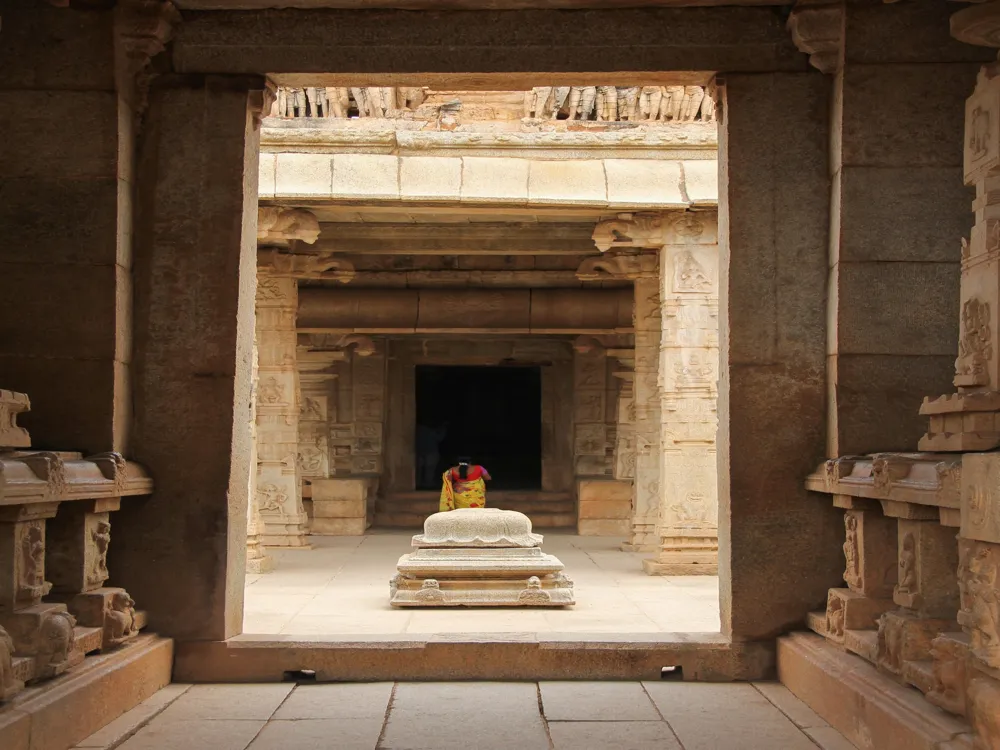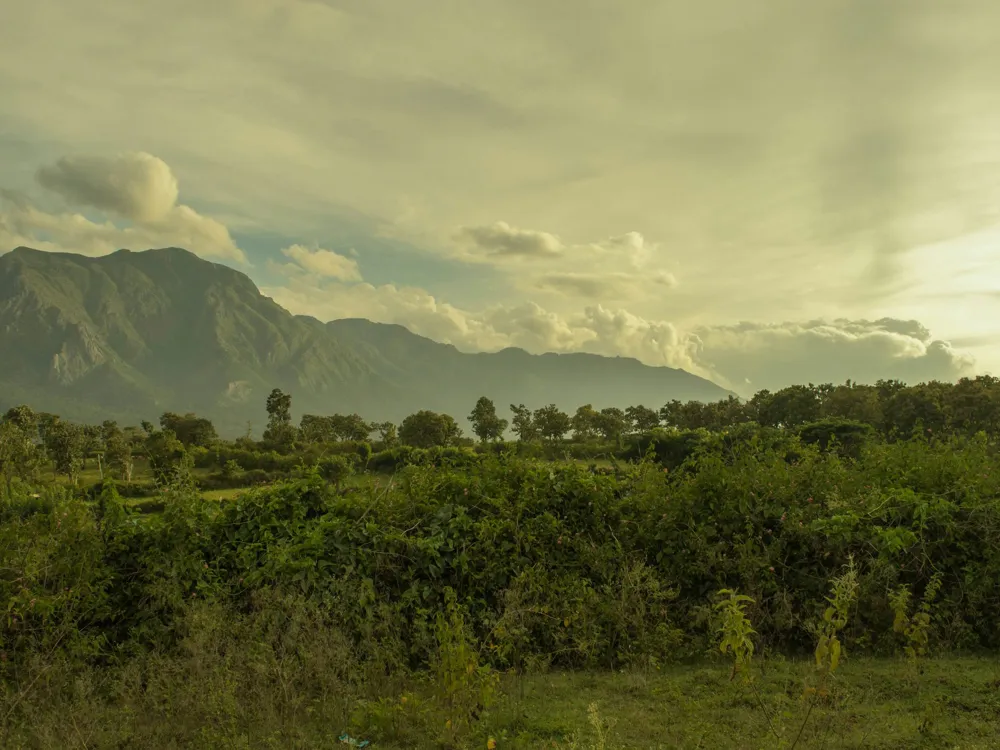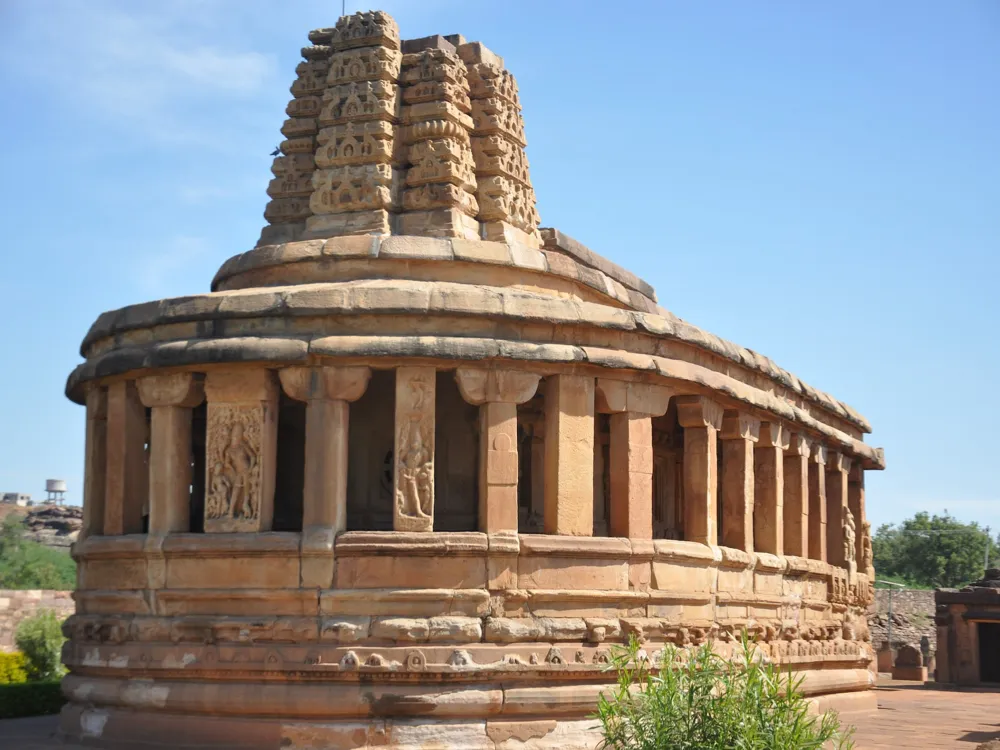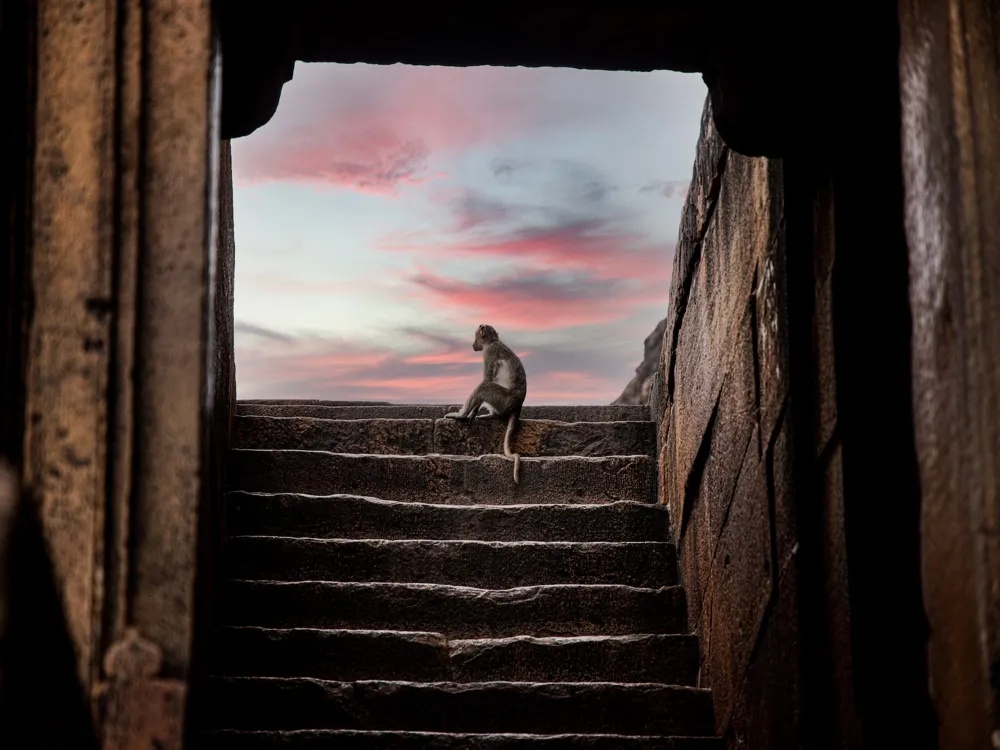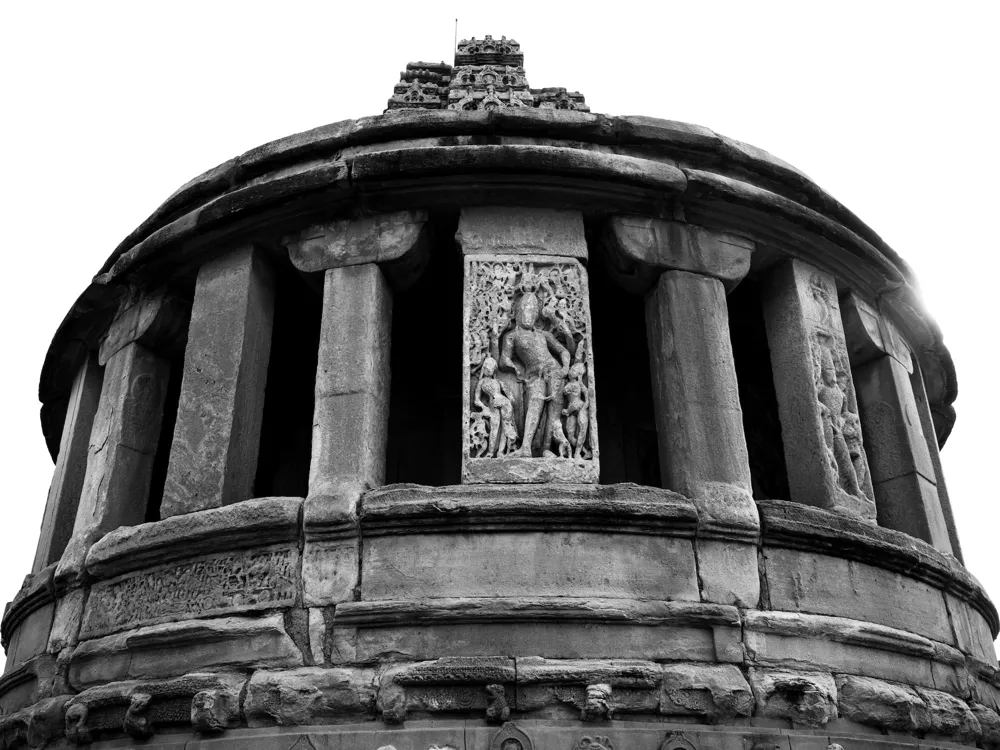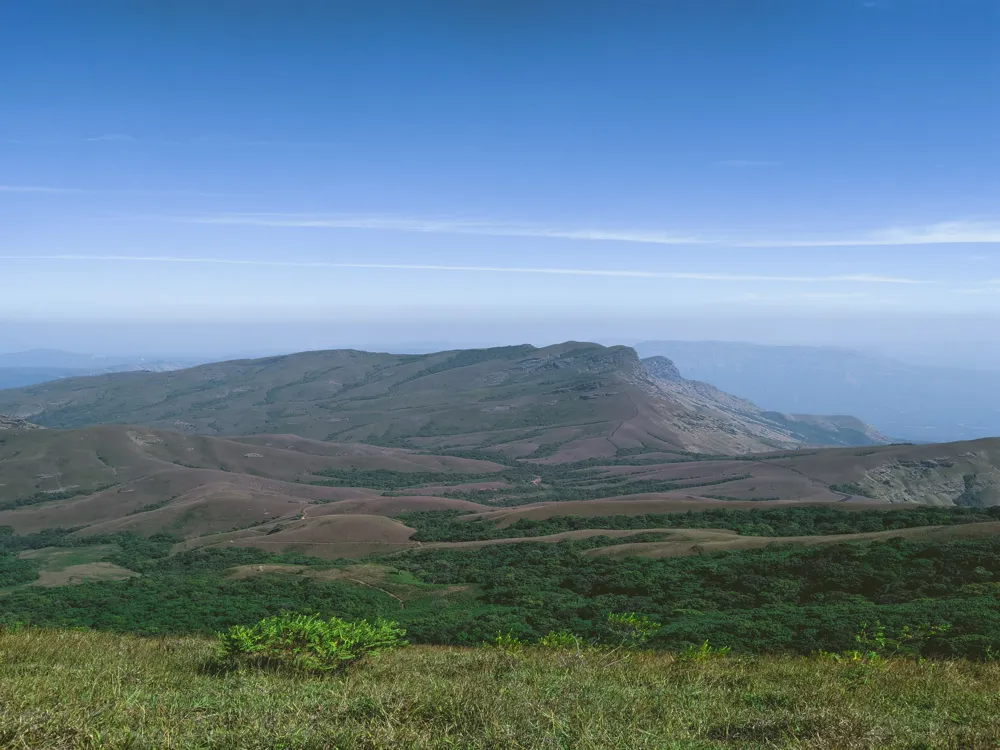Hampi, a UNESCO World Heritage Site, is a treasure trove of historical and architectural wonders. Nestled within the ruins of the ancient Vijayanagara Empire in Karnataka, India, Hampi's landscape is dotted with numerous temples, palaces, and market streets. Once the epicenter of the Vijayanagara Empire, Hampi thrived as a hub for trade and culture during the 14th to 16th centuries. The Tungabhadra River meanders through its rugged terrain, adding a serene backdrop to the grandiose ruins. The history of Hampi is as captivating as its landscapes. Founded by Harihara I and Bukka Raya I in 1336, it rose to prominence under the reign of Krishnadevaraya. The city was renowned for its immense wealth, flourishing arts, and grandiose architecture. However, in 1565, after the Battle of Talikota, Hampi fell into ruin, leaving behind a hauntingly beautiful landscape filled with architectural marvels that tell tales of its past glory. Visitors to Hampi are greeted with a surreal experience, as they walk amidst the ruins that whisper stories of a bygone era. The site is home to over 1,600 relics, including the majestic Virupaksha Temple, the Vittala Temple with its iconic stone chariot, and the sprawling royal complex. Hampi's unique blend of history, culture, and natural beauty makes it a must-visit destination for history enthusiasts, architects, and travelers alike. The architectural legacy of Hampi is a testament to the ingenuity and skill of the Vijayanagara artisans. The city's architecture is a harmonious blend of Dravidian and Indo-Islamic styles, reflective of the diverse cultural influences that shaped the Vijayanagara Empire. The use of locally sourced granite and the intricate craftsmanship are hallmarks of Hampi's structures. One of Hampi's architectural jewels is the Virupaksha Temple, dating back to the 7th century and still in active worship. Its towering gopuram (gateway tower) dominates the Hampi skyline. The temple complex is a masterpiece of Vijayanagara architecture with its intricately carved pillars, detailed frescoes, and sacred sanctums. Another iconic structure is the Vittala Temple, renowned for its extraordinary stone chariot and musical pillars. Each pillar is sculpted with intricate carvings and produces musical notes when tapped. This architectural marvel showcases the advanced understanding of acoustics and engineering by the Vijayanagara builders. The royal complex, at the heart of Hampi, includes the Queen's Bath, Lotus Mahal, Mahanavami Dibba, and Hazara Rama Temple. These structures display a blend of Hindu and Islamic styles, featuring arched gateways, geometric patterns, and elaborate frescoes. The Lotus Mahal, with its lotus-like dome and airy pavilions, is a fine example of the syncretic architectural style. The city's marketplaces, aqueducts, and public baths reflect the advanced urban planning and water management systems of the Vijayanagara Empire. The Hampi Bazaar, a 1-km long street facing the Virupaksha Temple, was once a bustling market and remains a testimony to the city's economic prowess. Overall, Hampi's architecture is not just a display of historical grandeur but also an enduring legacy of technological advancement and cultural amalgamation. Each ruin, temple, and monument in Hampi is a chapter from the past, waiting to be read and marveled at. The ideal time to visit Hampi is from October to February when the weather is pleasant. Summers in Hampi can be extremely hot, making exploration challenging. Accommodations in Hampi range from budget guesthouses to luxury resorts. Staying in the nearby town of Hospet offers more options and is only a short drive from Hampi. Bicycles and scooters are available for rent and are a great way to explore Hampi at your own pace. For longer distances, auto-rickshaws and private taxis can be hired. Consider hiring a local guide for a more informative experience. Guides can provide insights into Hampi's history and legends that are not found in guidebooks. Hampi is a site of religious significance, so dress modestly and remove footwear when entering temples. Respect the local customs and the sanctity of the monuments. Hampi is accessible by road, rail, and air. The nearest airport is in Bellary, about 60 kilometers away. Hospet, 13 kilometers from Hampi, is the nearest railway station with good connectivity to major Indian cities. By road, Hampi is well-connected with major cities in Karnataka and neighboring states. Regular bus services from Bengaluru, Hyderabad, and Goa are available. For a more scenic route, consider driving or hiring a taxi from these cities.Overview of Hampi, Karnataka
Architecture of Hampi
Tips When Visiting Hampi
Best Time to Visit
Accommodation
Local Transportation
Guided Tours
Respect Local Customs
How To Reach Hampi
Riverside Ruins
Hampi
Karnataka
NaN onwards
View hampi Packages
Hampi Travel Packages
View All Packages For Hampi
Top Hotel Collections for Hampi

Private Pool

Luxury Hotels

5-Star Hotels

Pet Friendly
Top Hotels Near Hampi
Other Top Ranking Places In Hampi
View All Places To Visit In hampi
View hampi Packages
Hampi Travel Packages
View All Packages For Hampi
Top Hotel Collections for Hampi

Private Pool

Luxury Hotels

5-Star Hotels

Pet Friendly








